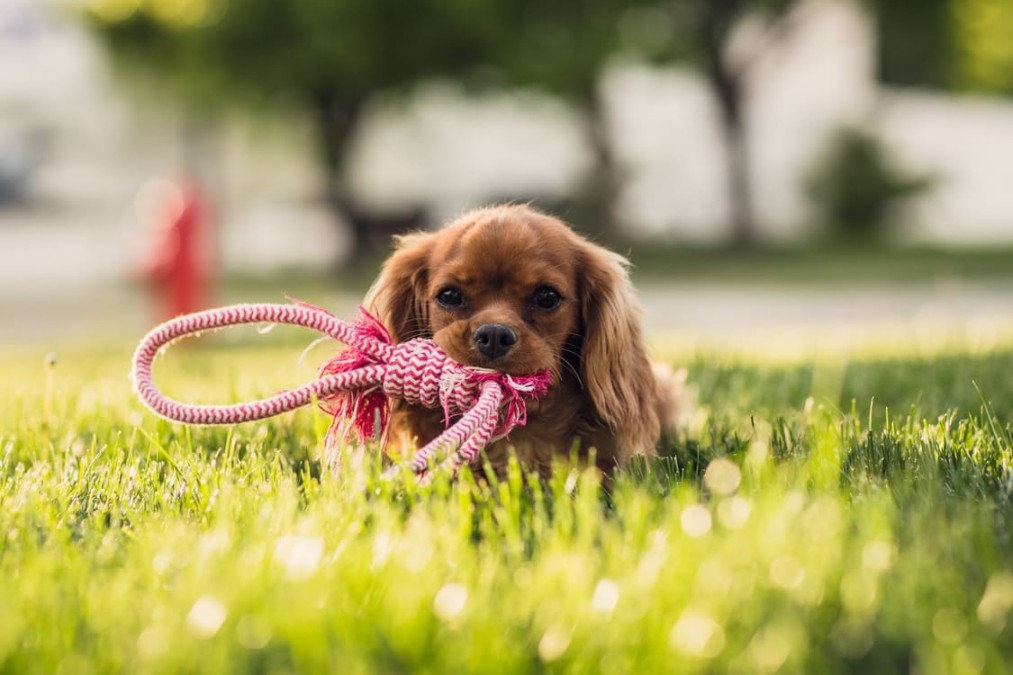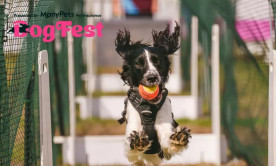Getting a puppy is both exciting and a little daunting for first time owners. In this article we breakdown what you need to buy for your new pup.
Shopping List Breakdown
- 1. Puppy Food
- 2. Collars and ID Tags
- 3. Leads and a Harness
- 4. Bit and Tug Toys
- 5. Puppy Pen and Bedding
- 6. Brushes and Shampoo
- 7. Teething Gel and Tooth Care Treats
- 8. Puppy House Training Pads
- 9. Poop Scoops and Bags
- 10. Register at a Vet
1. Puppy Food
If you get your puppy from a breeder, then they should be able to recommend a suitable diet for the breed, as well as offer advice about feeding your dog in its early stages.
Although the more premium or complete food brands are more expensive than the basic or economy varieties, they do contain more nutrients, which ensures that your puppy gets the right vitamins and minerals. As they have a better balanced diet, they also tend to eat less of the complete foods, meaning the price difference often evens out.
You will have a choice of between dry food and wet tinned food. If you choose dry foods, your puppy will need to drink more water as wet foods have around 80% water content, so keep this in mind.
But whichever food type you choose (and your puppy prefers), it is recommended that you don’t change food types frequently as it is important the puppy sticks to a regular eating pattern while it grows.
2. Collars and ID Tags
In the UK, all dogs and puppies that are in public areas must wear ID Tags. It is best to attach these tags to a suitable dog collar.
A breeder may have already introduced the puppy to a collar, but it is a good idea to your puppy used to wearing one before you take them out for their first walk. It is important to start this introduction early and slowly.
3. Leads and Harnesses
Many owners prefer to use a dog harness instead of attaching a leash directly to a dog’s collar. And like the collar, it is recommended that you introduce your puppy to the harness early and gradually.
To help you decide between the two, we have a helpful guide you can read here.
A good harness is designed to keep your dog secure and comfortable over long periods, as well as reduce the risk of leads tangling. Here at Julius K9, we have many puppy harnesses to choose from including the hugely popular IDC range or the more lightweight Belt range.
We also have a wide selection of dog leads and leashes, form reflective ones to leather designs, as well as twin leads.
4. Bite and Tug Toys
Puppies begin biting and nipping as soon as the start growing teeth at around four weeks of age.
To help them develop their bite senses and build up their strength, it is highly recommended that you encourage them to play with a range of bite and tug toys.
For more information, there is a very handy and detailed guide to bite training on ClickerTraining.com.
5. Puppy Pen and Bedding
Ideally, puppy pens should be setup on easy to clean hard floors. They should allow the dog enough space to the move around freely but also be safely located while offering the dog some peace and quiet.
When deciding on bedding for your puppy, you need to pick one that is both comfortable and durable. Leather and plastic bedding is more practical for cleaning, while more fleece based beds will offer more comfort and warmth.
Here at Julius K9, we have dog bed mattress underlays that both scratch proof and water-repellent.
6. Brushes and Shampoo
Keeping your puppy well groomed is important as it keeps the fur from getting knotted and helps the coat to remain healthy.
There are four brush types for dogs: Pin, Bristle, Slicker and Rake. The one you’ll use will depend on the breed and fur type of the dog, though many owners prefer using a combination. For example, bristle brushes can be used on all fur lengths, while a slicker brush can ease out tangles and knots.
You should not use human shampoo on a dog’s fur as it will dry out the coat. The shampoo to buy will also depend on your dog’s skin, whether it is dry, flaky or greasy. Your vet or breeder should be able to recommend the brand for your breed.
7. Teething Gel
Puppies begin to teething at around four weeks old and should have a full set of baby teeth at around eight weeks of age. Like babies, this teething process can be uncomfortable for your pup so you could use puppy teething gel to help ease the pain.
8. Puppy Training Pads
It is important to train your puppy to use training pads as early as possible.
Buying scented pads will encourage your pup to use the pads more readily. Ideally these should be used on hard floors, but all established brands offer pads that are highly absorbent.
9. Poop Scoops and Bags
Before you take your puppy out for the first time, you will need to think about clearing up its mess. Some owners simply use plastic bags, while others prefer using arm length poop scoops to keep their distance.
Additionally, many owners are moving over to biodegradable doggy bags which breakdown quicker and are made from recycled materials.
10. Register at a Vets
Getting your puppy vaccinated and micro-chipped are vital to raising a healthy dog. But a veterinarian can also offer valuable advice on what products to buy for your breed.
To find a qualified and registered vet near you, you can use the official Royal College of Veterinary Surgeons' website.





